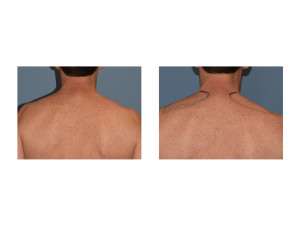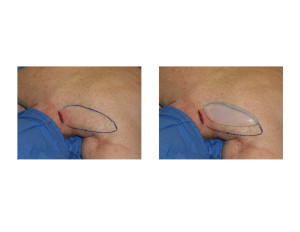Background: The trapezius muscle is a large superficial muscle in the upper back. It extends from the occipital bone superiorly down to the spine to the lower thoracic vertebrae and then out laterally to the shoulder blade. (scapula) Muscular development of the trapezius muscle by male body buillders and exercise enthusiasts is focused largely on the upper portion of the muscle as it is the most visible from the front as it ascends up the sides of the neck.
The superior or upper portion of the trapezius can be most effectively enlarged through exercises that elevate the shoulders. Maintaing persistence of this type of muscle hypertrophy requires diligence to muscle training. For those men who are unable or do not desire to achieve trapezius muscle enlargement, there are several surgical options to bypass these efforts.
Fat injections can be done into the trapezius muscle provided one has enough fat to do so. While a viable muscle augmentation method, the take and persistence of the injected fat is not assured. Like many other muscle areas of the body (pectoral, biceps, triceps, gluteus and gastrocnemius) implants can be used to achieve an assured and permanent enlargement effect.
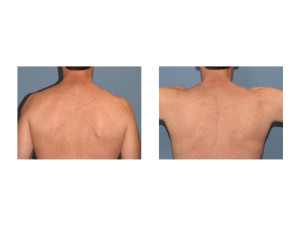
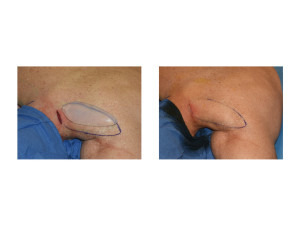
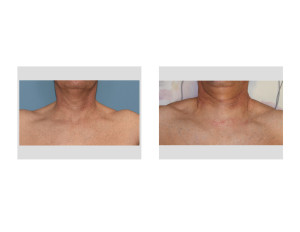
The upper muscle fibers of the trapezius muscle run from the bottom of the occipital bone out to the posterior border of the lateral third of the clavicle. While not traditionally thought of as a muscle that can be augmented, the upper portion of the trapezius can be. Increasing its visible height from the front by placing a small implant at its most superior fiber level is a straightforward technique that can be done in an hour of operative time for both sides. The key is to place the implants in the subfascial plane to prevent their visible outlines.
Highlights:
- Trapezius muscle augmentation can be done surgically done by fat injections or the use of trapezius implants.
- Trapezius muscle implants are placed in the subfascial plane of the upper trapezius muscle.
3) Small contour solid silicone implants produce an immediate augmentation of the upper trapezius muscle.
Dr. Barry Eppley
Indianapolis, Indiana



